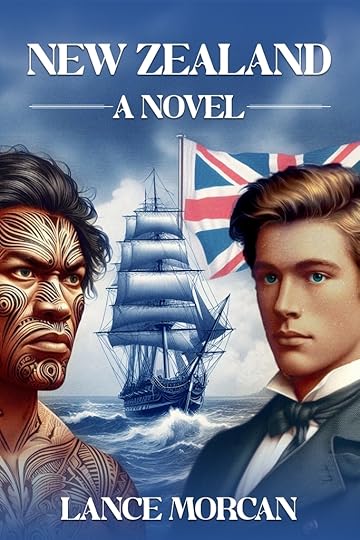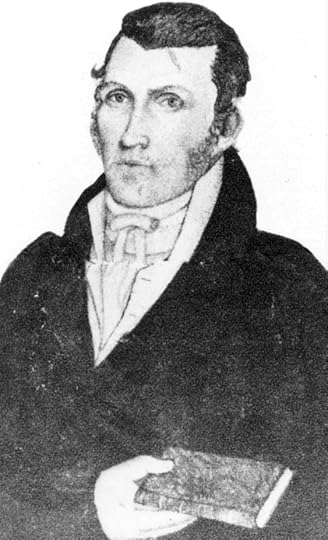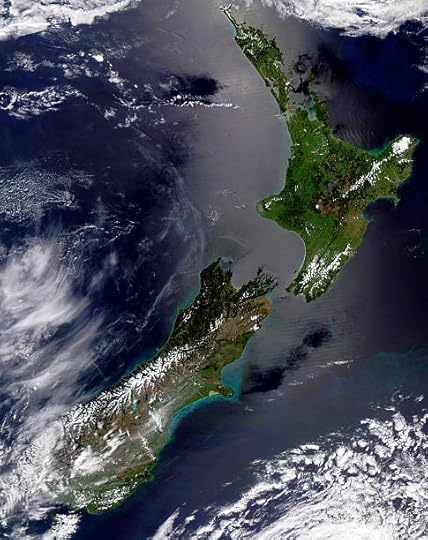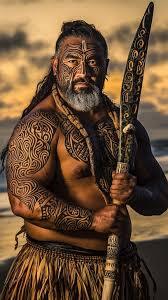Lance Morcan's Blog, page 9
February 27, 2025
Sailors enjoy hospitality of Tahitian wahines in this excerpt from ‘New Zealand: A Novel’
The Tahitians’ unconstrained attitude to sex and, indeed, to life itself, was as far from European ways as Tahiti was from England. That was one of the first observations the men of Captain James Cook’s bark the Endeavour made during a stopover in Tahiti in 1769. They were there so that Cook could record the upcoming transit of Venus before sailing south to discover new lands. His men, however, had other priorities.

In the following excerpt from my new release historical adventure New Zealand: A Novel, the Endeavour’s company enjoy the hospitality of the villagers of Matavai Bay (pictured) early in their stay…
The feast that followed was worth the wait. Served on trays fashioned from the bark of trees, it included all manner of exotic fruit, fresh crayfish, prawns and oysters, and roasted pork and turtle meat topped with coconut cream. The food was served with generous quantities of kava, which, despite being an acquired taste, was well received by most of the visitors.
By now the celebrations were in full swing and many of the visitors were becoming intoxicated. Some of the worst-affected of the Endeavour’s company lay in a stupor on the ground while those still sober or partly sober participated in the trading now underway; others took advantage of the comforts offered by friendly wahines. Many of the womenfolk were either married or betrothed yet their promiscuity seldom caused arguments.
Unfortunately, venereal disease would soon sweep through the Endeavour’s crew, affecting thirty-two sailors and six of the marines – an unfortunate development that would surprise Cook. Surgeon Monkhouse had assured him his men were not poxed before they reached Tahiti, and the Dolphin’s medical records confirmed that the clap had not been a problem during her visit to these same shores. This could only mean the French were the culprits as their ships had been the only vessels to anchor in Matavai Bay since the Dolphin’s historic visit.
*
New Zealand: A Novel is available at Waterstones Bookstores UK & Europe and via Amazon at https://www.amazon.com/New-Zealand-Novel-Lance-Morcan/dp/0473728524/

*******************************************************
February 26, 2025
John Jewitt’s diary brings the First Nations people of yesteryear alive!
Those who share our fascination with the First Nations people of North America will surely resonate with THE ADVENTURES OF JOHN JEWITT: The true story that inspired Into the Americas (Illustrated).
It’s one of several books that faithfully duplicates a young English seaman’s diarized account of his years as a captive of Mowachaht warriors in Nootka Sound, Vancouver Island, in the early 1800s.
John Jewitt’s diary was – as our book’s subtitle suggests – the inspiration for one of our bestselling novels, Into the Americas. The diary is a public domain book, so we didn’t hesitate to “borrow” some of Jewitt’s adventures and include them, albeit dramatized, in our novel.

John Jewitt…as pictured in his diary.
Jewitt was one of only two survivors when fierce Mowachahts slaughtered (decapitated) 25 crewmen aboard the brig The Boston. He and his fellow survivor had to endure more than two years as slaves of the First Nations people of Nootka.
Jewitt’s writing seems surprisingly modern, and his observations are insightful and perceptive, which makes for a very easy, interesting read. He clearly resonated with his captors and his written observations of them and their customs really bring the First Nations people of the era alive.
There are several credible versions of John Jewitt’s public domain diary available on Amazon. Whether you read our version or another, no matter. His story is highly recommended!
And for those who prefer fiction, here’s the novel Jewitt’s diary inspired…
*************************************************************************
February 25, 2025
Americans’ obsession with Doomsday bunkers in New Zealand noted by authors of ‘Underground Bases’
American company SAFE which supplies underground shelters has confirmed that it has built a “Doomsday bunker” in New Zealand for a client – the first time such a project has been confirmed in the land we Kiwis fondly call “God’s Own”. That’s according to this NZ Herald report dated 23 Feb. https://www.nzherald.co.nz/nz/apocalypse-now-doomsday-bunker-secretly-installed-on-nz-property-confirmed/IHQ47FV7ZJGDLMJUEA3YMUG6MM/

It transpires that SAFE (Strategically Armoured & Fortified Environments) has been providing high-tech customised security systems for the mega-wealthy for years – one of the dearest being “a single $103m estate in the US, capable of protecting 28 people from every known threat short of the Earth tipping off its axis.”
The same Herald article reports that SAFE Founder and president Albert Corbi would not divulge exactly where in New Zealand the underground shelter was located and “He was similarly tight-lipped on the project’s budget.”
Apparently, there are several underground homes in New Zealand, including a bunker house near Lake Tekapo and a multi-million-dollar compound with a safety bunker and steel gates in the Western Bay of Plenty. It seems American billionaires are the main customers for such homes.
I will likely include Americans’ apparent obsession with buying Doomsday bunkers in New Zealand if I ever release a new edition of the book Underground Bases – Book 7 in the contentious Underground Knowledge Series co-authored by James & Lance Morcan.
That book focuses on Subterranean Military Facilities and the Cities Beneath Our Feet, which happens to be its subtitle. It reveals details of confirmed and rumoured underground facilities in the US and around the world. However, from memory, New Zealand doesn’t get a mention. The nearest we get to NZ is Pine Gap across the Ditch in Australia.
Given Americans’ apparent obsession with Doomsday bunkers here in God’s Own, NZ may well get a mention in the next edition.
*
‘UNDERGROUND BASES: Subterranean Military Facilities and the Cities Beneath Our Feet’ is available via Amazon. https://www.amazon.com/UNDERGROUND-BASES-Subterranean-Facilities-Underground/dp/0473365405/

Underground Bases makes a compelling case for there being an enormous hidden world under the Earth’s surface.
**************************************************************************
February 23, 2025
Early chapters of ‘New Zealand: A Novel’ herald the beginning of a new and bloody era
It’s Winter 1500 AD in the land that would one day be named New Zealand. The Era of the Moa-Hunter had ended. Now, two centuries after the arrival of Pacific Islanders from Hawaiki, a new and bloody era was about to begin.
So begins an early chapter in my new release historical adventure New Zealand: A Novel.

Excerpt continues: For the first time, the hills and shores of Aotearoa echoed to the sounds of war. As competition for land and food resources increased, inter-tribal fighting became the norm. The inevitable result was war on a scale never before seen in Kupe’s land. Fighting was hand-to-hand, vicious and bloody. One ugly side-effect of the conflict was cannibalism. Eating the flesh of enemies provided a new source of meat as well as having symbolic significance for the victors. Cannibalism quickly became part of Maori culture, just as it had throughout the islands of the South Pacific. The losers in warfare accepted they would end their days in slavery or on the cooking fire, or probably both. Slaves provided labour and were a source of food when their meat-starved captors were hungry.
Feuds erupted between iwis (tribes) which had previously lived side by side in peace. As rivalries intensified, bloodshed followed. Given the Maori preoccupation with mana (prestige) any slight was an invitation to violent retribution. The concept of mercy was unknown and the cycle of revenge that resulted was known as utu, or blood vengeance.
Utu would become the law by which Maori lived. It would survive, indeed flourish, until well into the nineteenth century.
Apera’s Te Arawa iwi had consolidated their tribal base at Rotorua, the inland whakatikatikatanga (settlement) located on the shores of the same thermal lake where they’d resided since relocating from coastal Maketu. But like most tribes of the day they needed more land for their ever-expanding population. It was because of this their rangatira decided to lead a sizeable war party down the east coast in search of slaves and new territory.
The decision to make war was not taken lightly. The Te Arawa had long been insulated from the feuding that was now common amongst coastal tribes. Increasing demand for new territory had recently seen their own tribal lands come under threat. Fortunately, their superior numbers had enabled them to repel any invaders. However, this was not enough to ensure their survival. More land, slaves and riches were needed.
Winter was always the worst time to travel or to make war. The land was cold and food was at its scarcest, but the Te Arawa warriors chose to make their move in the middle of winter when their enemies would likely be least prepared.
Almost one year to the day after he killed the last surviving moa, Apera led a war party of two hundred warriors to the coast. Among the headmen in their midst was the rangatira’s younger brother and right hand man, Kaihautu. He, too, was a natural leader, which was fitting because his name translated as a man with leadership qualities.
*
New Zealand: A Novel is available via Amazon, Waterstones UK & Europe bookstores, Mighty Ape NZ & via public libraries.
************************************************************
Contentious questions addressed in THE UNDERGROUND KNOWLEDGE SERIES I-V box set
Secret Techniques and Technologies to Increase IQ? Human or Alien Technologies? The $ickness Industry, Big Pharma and Suppressed Cures? J.D. Salinger’s Mind Control Triggering Device or a Coincidental Literary Obsession of Criminals? The Global Banking Elite Exposed and the Case for Restructuring Capitalism?
These are the subtitles allotted to the first five books in the contentious ‘THE UNDERGROUND KNOWLEDGE SERIES I-V’ co-authored by James and Lance Morcan.
Books 1 to 5 in the series are available as a box set; they have all featured in recent LinkedIn posts and are listed below…
-GENIUS INTELLIGENCE: This book (with foreword by leading scientist Dr. Takaaki Musha) shatters the myth that geniuses are born not developed. https://www.amazon.com/GENIUS-INTELLIGENCE-Techniques-Technologies-Underground/dp/0473318490/
-ANTIGRAVITY PROPULSION: A far-reaching exploration into the UFO phenomenon that covers all possible scenarios and discounts nothing. https://www.amazon.com/ANTIGRAVITY-PROPULSION-Technologies-Underground-Knowledge/dp/0473365391/
-MEDICAL INDUSTRIAL COMPLEX: An explosive book that explores the contention Big Pharma and other participants in the healthcare sector put profits ahead of patients’ wellbeing. https://www.amazon.com/MEDICAL-INDUSTRIAL-COMPLEX-Suppressed-Underground/dp/B08CJR21HQ/
-THE CATCHER IN THE RYE ENIGMA: This book unearths the mysteries surrounding arguably the most controversial book of all time – J.D. Salinger’s 1951 novel The Catcher in the Rye. https://www.amazon.com/Catcher-Rye-Enigma-Coincidental-Underground/dp/0473380498/
-INTERNATIONAL BANKSTER$: This book identifies who is responsible for the gigantic financial gulf that separates the top 1% of the population from the common people, or the 99%. https://www.amazon.com/INTERNATIONAL-BANKSTER-Restructuring-Capitalism-Underground/dp/B08CJXDMCP/
*
THE UNDERGROUND KNOWLEDGE SERIES I-V is available via Amazon as a Kindle ebook only. However individual books in the series are available via Amazon as both Kindle ebooks and paperbacks.
Other books (6, 7 and 8) in the series are:
BANKRUPTING THE THIRD WORLD: How the Global Elite Drown Poor Nations in a Sea of Debt – https://www.amazon.com/BANKRUPTING-THIRD-WORLD-Underground-Knowledge/dp/B08CJNJRQK/
UNDERGROUND BASES: Subterranean Military Facilities and the Cities Beneath Our Feet – https://www.amazon.com/dp/0473365405/
VACCINE SCIENCE REVISITED: Are Childhood Immunizations As Safe As Claimed? – https://www.amazon.com/dp/0473521598/
**********************************************************
February 20, 2025
It seems we, the authors of ‘Vaccine Science Revisited’, share a common goal with RFK Jr. regarding vaccine safety
America’s new Health Secretary Robert F. Kennedy Jr., who has long argued that drugmakers have too much sway over the approval of their products, is preparing to “minimize what he’s criticized as undue industry influence” over US health agencies. That’s according to today’s report in Politico.com

RFK Jr…on the warpath in his new role.
This should come as no surprise as RFK Jr. has long sowed doubt about the safety of vaccines as one of the nation’s most prominent vaccine critics. He has been especially critical of childhood vaccines, and this week, according to ABC News, advised reporters “he will ‘investigate’ childhood vaccine schedule and (the prescribing of) antidepressants”.
I resonate with this as I’ve long questioned whether childhood immunizations are as safe as claimed. In fact, that refrain is the subtitle of my book Vaccine Science Revisited: Are Childhood Immunizations as Safe as Claimed?
Co-authored by James Morcan and I, Vaccine Science Revisited is Book 8 in our contentious Underground Knowledge Series. It’s an unbiased, neutral, fact-based investigation that simply allows the science to do the talking on childhood vaccinations, and which includes a foreword by medical laboratory scientist Elísabet Norris.
This exhaustively researched book avoids all rumor, conjecture and anecdotal evidence, and steadfastly focuses on what the latest medical studies actually reveal about vaccines listed on the immunization schedule. All chapters include links to approved medical and scientific papers and documents.
*
Vaccine Science Revisited has a global rating of 4.7 out of 5 stars on Amazon.
“A work of extensive research into the antecedents and current status of childhood vaccinations.” –Amazon Vine Voice
“Easily the most comprehensive work I have read on the subject of vaccine safety. This book is truly a masterpiece!” –Amazon Reviews
“The book is a gem and it should be compulsory reading for soon-to-be parents, not to mention health professionals.” –Jeff Tran, Lawyer
“Thought-provoking and very readable (with) 740 references with hyperlinks to the original papers.” –Pro-vaccine author and mom Lee Murray
*************************************************************
February 18, 2025
Meet one of Aotearoa New Zealand’s truly creative gems: Tony Bridge – photographer, artist, author, poet extraordinaire!
Fellow creative Tony Bridge, who hails from New Zealand’s magical Far North, is turning heads with his photographic, artistic and literary brilliance.

Tony Bridge…a true creative.
Tony’s photography experience spans 40 years – and it shows in his visual offerings.
They say a picture paints a thousand words. A visit to Tony’s artist website at www.tonybridgecreates.com reconfirms that old saying. Here’s one of his iconic images (below).

Mitre Peak, Milford Sound…as seen through the lenses of Tony Bridge’s camera.
And here’s the welcome message that greets visitors on the site’s homepage…
Nau mai haere mae ki taku pae tukutuku.
Welcome to my artist website.
We invite you to step into a space where art goes beyond the ordinary. Each piece here tells a story, inviting you to see the world through the cultural lens of the Māori and the people before them, and our relationship with the land.
Explore the mysteries of nature from a Māori perspective, where every artwork reflects the mysterious and ancient wairua (spirit) of the land and the sacred breath that animates it. Just as the seasons change, bringing new colors and life, and the stars guide us through the night, our gallery offers something unique for every moment. Whether you’re searching for a bold, fiery statement or a subtle murmur, you’ll find art here that resonates with the rhythm of nature.
Discover the art that speaks to you.
Welcome to Te Kainga, my home place, where every art piece is a journey into the soul of nature.
A glance at Tony’s biography immediately reveals his connections with Maori. It’s part of his proud whakapapa, or heritage. Many if not all his photographs and artistic images reference that heritage in his website and newsletter – one example being his poems, which are posted in English and in Te reo, the Maori language.
Tony says his art is all about exploring the mystery and wonder of our natural world, and the mystical relationships between the elements of the living being.

Another view of the mountains in one of Tony’s favorite haunts…Fiordland.
However, his art isn’t limited to the natural world – as the image below demonstrates.

Tony’s legacy newsletter “Breathing Light” (pictured below) was also a breath of fresh air for we creatives. It has been replaced by his “Moonmouth Songs” newsletter. You can register for it via his website.

Photographers should note that Tony offers portfolio reviews, online mentoring and bespoke workshops for those wanting to improve their craft. These popular services can be accessed via the “Akoranga – Learning” link on his website.
*
Contact details for Tony Bridge:
Email: tony@tonybridgecreates.com
Phone: +64 21 22 7 3985
Twitter: @manaiarising
FB: tonybridgeartist
**************************************************************
February 17, 2025
Book 7 in ‘The Underground Knowledge Series’ very relevant given superpowers are busy building subterranean bases
Confirmed and unconfirmed reports the world’s superpowers are constructing or enlarging a variety of underground bases to serve various nefarious purposes have sparked renewed interest in Book 7 in our contentious Underground Knowledge Series.

Titled UNDERGROUND BASES: Subterranean Military Facilities and the Cities Beneath Our Feet, it asks what the superpowers get up to in their secret underground bunkers, and it examines confirmed and rumored underground facilities, and undersea facilities, in the US, China, Mexico, Australia and elsewhere.
Reports dating back to before (and during) the COVID plandemic that members of America’s so-called Global Elite were investing in the construction of underground bunkers in New Zealand in case of a nuclear holocaust saw a healthy spike in sales of this book.
Now we are experiencing the same reader interest in the wake of renewed reports of underground activity. These reports include:
Construction in China of a massive underground military command complex dubbed “Beijing Military City” near the Chinese capital. Once completed, it’s expected to be the world’s largest military command center and is designed to protect personnel against bombardment in the event of conflict.
The unveiling of a new underground missile facility along Iran’s southern coastline. Apparently, this so-called “Missile City” houses a range of missile systems and is part of Iran’s strategy to strengthen its military assets amid escalating tensions with the U.S. and its allies. This facility stores hundreds of cruise missiles capable of countering electronic warfare from enemy destroyers, and it features winding underground tunnels housing missile launchers.
In our book we speculate that the covert underground infrastructure around the world may be far bigger than anyone has previously supposed and is likely used for the development of suppressed technologies. Our sources include declassified files, university reports, WikiLeaks’ documents and interviews with ex-military personnel turned whistleblowers who claim to have worked in “cities below ground”.
In the book’s blurb we state:
“The exposé covers everything from: the US Department of Defence’s verified evacuation areas beneath the White House and the Pentagon as well as their acknowledged sites at Mount Weather and Cheyenne Mountain; underground facilities around the world including Russia’s sprawling Mezhgorye complex and Australia’s CIA-managed Pine Gap; the long-forgotten newspaper headlines which reported that Adolf Hitler and senior SS officers may have built a Nazi colony beneath Antarctica after WW2.”
*
Underground Bases is available via Amazon (via link below) and via public libraries. https://www.amazon.com/UNDERGROUND-BASES-Subterranean-Facilities-Underground/dp/0473365405/
*********************************************************************
February 16, 2025
‘New Zealand: A Novel’ a raw, no-holds-barred account of New Zealand’s early history
WARNING: Readers are advised New Zealand: A Novel is a raw, no-holds-barred account of New Zealand’s early history, fictionalized in places and not suitable reading for children.

It’s fair to say this novel highlights aspects of New Zealand’s history some factions within NZ society (such as its educational institutions) would prefer to see removed from the history books and from school history curriculums… Shame on them.
New Zealand: A Novel is an historical adventure that spans almost 500 years and covers the respective discoveries of New Zealand by Pacific Islanders and Europeans. From the outset the two stories are interposed. It starts in the 1300’s with the departure of Islanders from Hawaiki in search of land far to the south.
As stated under ‘Historical Notes’ at this end of this tale, I advise readers that “In the interests of telling a good story I have deviated from Maori and European history in places …(and) while my novel may not convey exactly what happened during the discovery and settlement of New Zealand, I believe it accurately captures the spirit of those bygone days.”
It also highlights the savagery of the times – between Maori iwi (tribes) and between Maori and pakeha (Europeans).

New Zealand: A Novel is available via Amazon, Waterstones UK & Europe bookstores, Mighty Ape NZ & via public libraries.
Readers can view early reviews via the book’s Goodreads and Amazon links.
-Lance Morcan (author)
**********************************************************
February 12, 2025
The atrocities continue with no improvement in the Congo since publication of ‘Bankrupting the Third World’
Reports this week that clashes between the rebel coalition Alliance Fleuve Congo (AFC) and Congolese forces have left more than 3,000 people dead in the DRC in less than two weeks shocked me – for two reasons.
Firstly, nothing has changed in the Democratic Republic of Congo since the (once-Ugandan-based) Lord’s Resistance Army (LRA) commenced its campaign of atrocities in the DRC and in South Sudan and the Central African Republic as well.
Secondly, nothing has changed in the DRC since our book Bankrupting the Third World was published in October 2015.
In this book, appropriately subtitled How the Global Elite Drown Poor Nations in a Sea of Debt, we devote an entire chapter – appropriately titled Banksters swindling the DRC – to the DRC. We remind readers that in book three of our international thriller series The Orphan Trilogy, our leading man (Nine) has reason to cross Zambia’s northern border into the DRC – previously and variously known as the Belgian Congo, Congo Free State, Congo-Leopoldville, Congo-Kinshasa and Zaire.
Nine’s target is a coltan refinery owned and operated by multinational conglomerate Carmel Corporation. The corporation is a fictitious entity, but the rare metallic ore known as coltan – official name columbite-tantalite – is very real.

A coltan mine in Rubaya, DRC.
This precious ore is found in large quantities in the DRC’s disputed eastern regions. When refined, the result is metallic tantalum, a heat-resistant powder capable of holding a high electrical charge – properties that are essential for the creation of electronic elements known as capacitors.
These capacitors are included in the manufacture of mobile phones, digital cameras, laptop computers and in communications technology generally, making coltan an indispensable part of the burgeoning and extraordinarily profitable communications and technology sectors. Hence its value.
As chance would have it, the DRC is believed to have 70% to 80% of known coltan reserves worldwide. It also has around one third of the world’s known diamond reserves and is rich in other precious metals, too. With reserves of untapped mineral deposits estimated at US$24 trillion, it’s little wonder the DRC is considered by some to be one of the wealthiest countries in the world, if not the wealthiest, in terms of natural resources.
Now here’s the rub: the DRC has been beset by war and is one of the most violent, unstable and poverty stricken nations on the planet.
A CNN report this week refers to this very problem in a report titled “Fighting in Africa’s mineral-rich DRC killed over 3,000 in less than 2 weeks. Here’s how your phone plays a part.”
It’s depressing, but it’s worth a read…
https://edition.cnn.com/2025/02/12/africa/fighting-drc-congo-minerals-phone-intl/index.html

Bankrupting the Third World – Book 6 in our contentious The Underground Knowledge Series – is available via Amazon as a Kindle ebook and paperback. https://www.amazon.com/BANKRUPTING-THIRD-WORLD-Underground-Knowledge/dp/B08CJNJRQK/
This book is dedicated to the impoverished in forgotten places of the world.
*************************************************************



